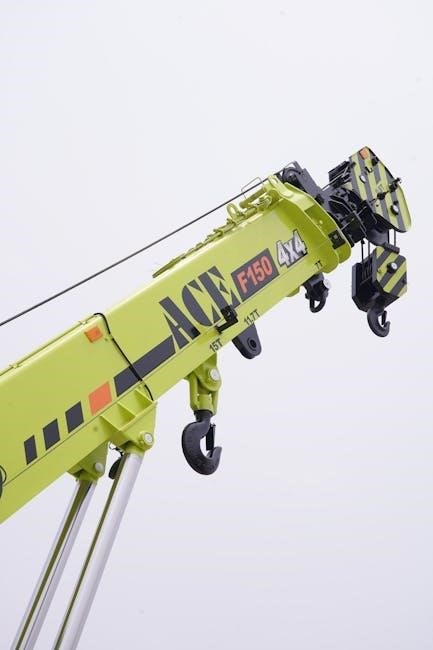Eulers method is a numerical technique for solving differential equations, providing approximate solutions by taking the tangent line at each step, as seen in online resources and pdf files available.
Definition of Eulers Method
Eulers method is defined as a numerical procedure for solving ordinary differential equations, which are equations that involve an unknown function of one variable and its derivatives. The method involves approximating the solution by taking small steps, with each step using the tangent line to the solution curve at the current point to estimate the next point on the curve. This process is repeated to generate a sequence of approximations to the solution, as discussed in various online resources and pdf files. The definition of Eulers method is based on the idea of using the derivative of the function to estimate the next value of the function, and it is a fundamental concept in numerical analysis. The method is widely used to solve differential equations, and its definition is an important part of understanding how it works and how it can be applied to solve various problems.
Applications of Eulers Method
Eulers method applies to various fields, including physics, engineering, and mathematics, solving differential equations and modeling real-world problems with numerical techniques and solutions available online.
Linear Initial Value Problems
Linear initial value problems can be solved using Eulers method, which provides an approximate solution by iteratively applying the method to the differential equation. The linear initial value problems in Exercises can be solved using Eulers method, as they cannot be solved exactly in terms of known elementary functions. Eulers method is a simple and intuitive way to solve these problems, and it is often used as a first step in understanding more complex numerical methods. The method involves approximating the solution at each step, using the tangent line to the solution curve, and then repeating the process to obtain a more accurate solution. This process can be repeated multiple times, with the solution converging to the exact solution as the number of steps increases. Eulers method is a useful tool for solving linear initial value problems, and it has many applications in physics, engineering, and mathematics.
Non-Linear Problems
Non-linear problems can also be solved using Eulers method, although the solution may not be as straightforward as for linear problems. The method can be applied to non-linear differential equations, but the accuracy of the solution may depend on the specific problem and the initial conditions. In some cases, Eulers method may not converge to the exact solution, or it may converge slowly, requiring a large number of steps to achieve a satisfactory level of accuracy. However, Eulers method can still be a useful tool for solving non-linear problems, particularly when other methods are not applicable or are too complex to implement. By iteratively applying Eulers method, it is possible to obtain an approximate solution to non-linear problems, which can be useful in a variety of fields, including physics, engineering, and mathematics, where non-linear problems are commonly encountered. The solution can be improved by refining the step size.
Comparison with Other Methods
Eulers method is compared to other numerical methods, such as Runge-Kutta method, for accuracy and efficiency in solving differential equations online and in pdf resources available freely.
Runge-Kutta Method
The Runge-Kutta method is a popular numerical technique used to solve differential equations, offering a more accurate solution compared to Eulers method. This method is widely used in various fields, including physics and engineering, to solve complex problems. The Runge-Kutta method is considered to be more efficient and reliable, especially for systems of differential equations. It is often used to solve problems that cannot be solved exactly using elementary functions. The method involves a series of steps, including calculating the slope at each point, to provide a more accurate approximation of the solution. Online resources and pdf files provide a detailed explanation of the Runge-Kutta method, including examples and solved problems, making it easier to understand and apply this method to real-world problems. The Runge-Kutta method is a powerful tool for solving differential equations, and its comparison with Eulers method is essential to understand its advantages and limitations.
Modified Eulers Method
The modified Eulers method is an improvement over the basic Eulers method, providing a more accurate solution to differential equations. This method estimates the slope at the midpoint of each step, resulting in a more precise approximation of the solution. The modified Eulers method is widely used in numerical analysis and is considered to be a reliable technique for solving differential equations. Online resources and pdf files provide a detailed explanation of the modified Eulers method, including examples and solved problems. The method involves a series of calculations, including the estimation of the slope at the midpoint, to provide a more accurate solution. The modified Eulers method is a powerful tool for solving differential equations and is often used in conjunction with other numerical methods. It offers a balance between accuracy and computational efficiency, making it a popular choice for solving complex problems. The method is easy to implement and understand.
Practice Questions and Examples
Online resources provide practice questions and examples for Eulers method, including pdf files with solved problems and exercises for numerical solution of differential equations easily.
Numerical Solution of Ordinary Differential Equations
The numerical solution of ordinary differential equations is a crucial aspect of Eulers method, as it provides a way to approximate solutions to complex equations. Online resources, such as pdf files, offer a wealth of information on this topic, including solved examples and exercises. These resources demonstrate how Eulers method can be applied to a variety of ordinary differential equations, including linear and non-linear equations. By using Eulers method, individuals can gain a deeper understanding of how to solve these types of equations and develop their problem-solving skills. Furthermore, the numerical solution of ordinary differential equations has numerous real-world applications, making it a vital area of study. Overall, the numerical solution of ordinary differential equations is a fundamental concept in mathematics and science, and Eulers method is a valuable tool for solving these types of equations. Many online resources are available to help individuals learn and apply Eulers method.
Systems of Equations
Systems of equations are solved using Eulers method, with applications in various fields, including physics and engineering, as discussed in online pdf resources and examples available freely.
Euler-Poisson-Darboux Equations
The Euler-Poisson-Darboux equations are a type of partial differential equation that can be solved using Eulers method, as discussed in various online resources and pdf files available for download.
These equations have numerous applications in physics and engineering, and are often used to model real-world phenomena.
The solution of these equations using Eulers method involves approximating the solution at each step, and can be used to obtain accurate results.
The system of Euler-Poisson-Darboux equations is considered, and the Cauchy problem is solved for the case when characteristic numbers of matrix-coefficient are given.
The comparison among the solutions is presented in figures, and both problems are solved in a given interval.
The Euler-Poisson-Darboux equations are an important area of study, and Eulers method provides a useful tool for solving these equations.
The method is simple to implement and can be used to obtain accurate results, making it a popular choice among researchers and engineers.
Overall, the Euler-Poisson-Darboux equations are an important area of study, and Eulers method provides a useful tool for solving these equations, with numerous applications in physics and engineering.
and Future Directions
Eulers method has limitations, but future research can improve its accuracy and efficiency in solving differential equations, as discussed in online pdf resources and files available today.
Limitations and Improvements
Eulers method has several limitations, including its low accuracy and stability, which can be improved by using more advanced numerical methods, such as the Runge-Kutta method, as seen in online resources and pdf files.
These limitations can be addressed by implementing modifications to the method, such as estimating the slope at the midpoint of each step, to provide more accurate solutions, and using higher-order methods to improve efficiency;
Additionally, the method can be improved by using adaptive step sizes and error control techniques, which can help to optimize the performance of the method and provide more reliable results, as discussed in various online pdf resources and files available today for reference and study.



